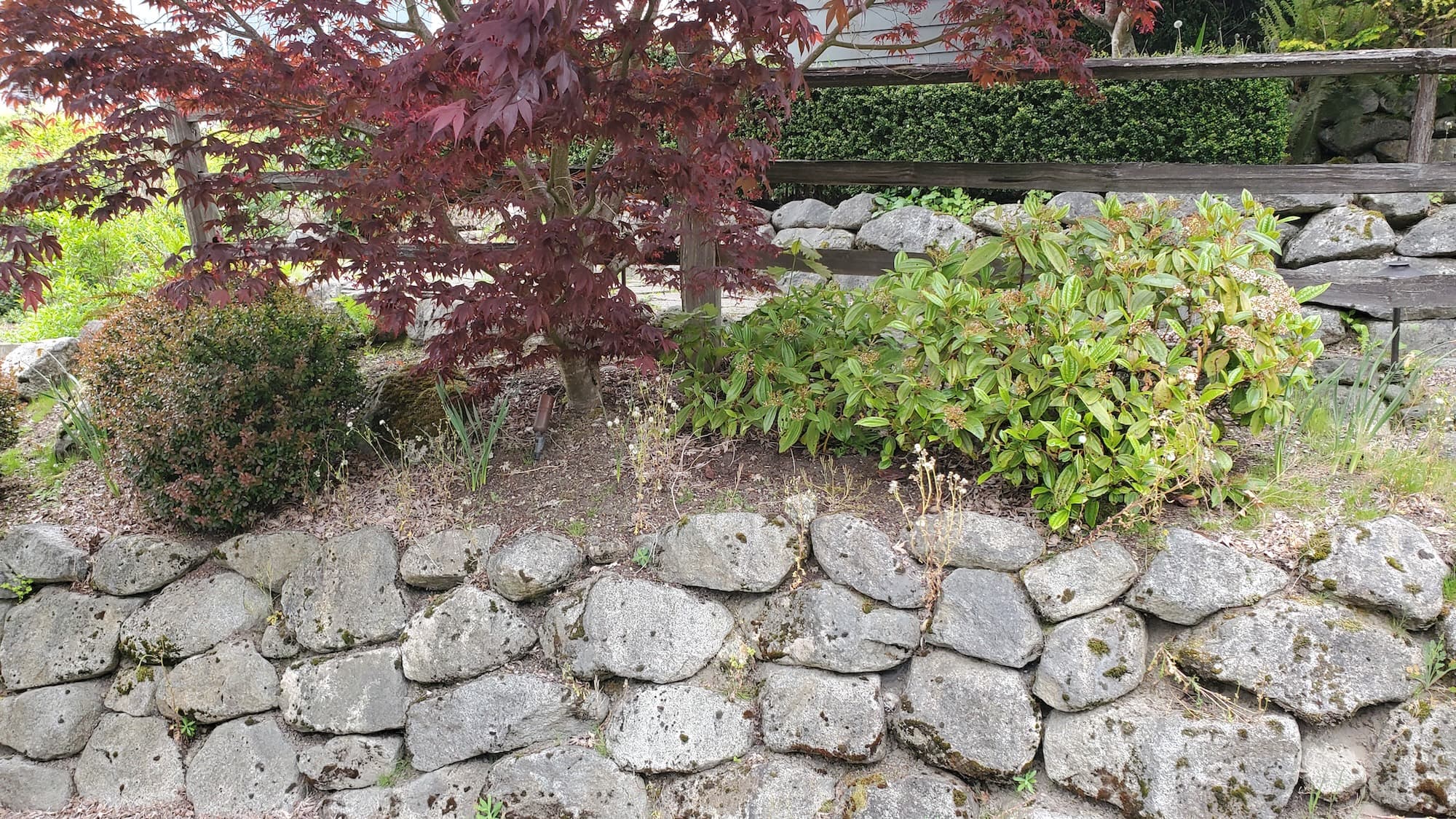West Seattle Layered Multi-Height Shaping
Homeowner’s Issue
West Seattle yards are a weird mix: steep pockets, shallow topsoil on some ridges, and heavy winter moisture that keeps moss and ivy happy. Many properties on High Point, Admiral, and near Lincoln Park show compacted soils and seasonal saturation that push surface roots up and make beds wash on winter rains. South- and west-facing slopes get more sun and wind (Alki exposures can be salt‑spray and wind-pruned), while shady gullies and north sides harbor moss, sword fern, English ivy, and Himalayan blackberry in abundance.
Homeowners want tidy curb appeal without constant upkeep, but standard flat plantings don’t solve erosion, sight-line, or drainage problems common here. HOA rules in some blocks prefer low, layered, tidy plantings for sight-lines and parking visibility. With Seattle’s rainy season concentrated from late fall through spring and a dry stretch in summer, planting choices must tolerate winter saturation, summer drought, and variable sun. That’s why layered, multi-height beds using Pacific Northwest natives and low-water shrubs work: they hold soils, reduce mowing/pruning, and create intentional sight-lines that meet neighborhood expectations while surviving local microclimates.
Our Quality Service
We shape layered planting zones to work with West Seattle’s microclimates, not against them. We start with a walk‑through, soil check, slope assessment, and sun/microclimate mapping. Typical tools: hand pruners, loppers, battery shears, small stump grinders (when needed), pry bars for invasive roots, compost, and mulch blowers. We use only sustainable methods — no herbicides — relying on hand‑removal, mechanical root-out, targeted solarization, and mulch to suppress weeds.
Realistic timelines:
- Small front bed or curb project: 1 day.
- Typical yard reshaping with new plants: 2–4 days.
- Steep slopes, significant haul‑away, or permit work: 3–6 days.
Local insight: we build soil with compost and locally appropriate amendments, add mulch layers for moisture retention, and install low‑flow drip when clients want irrigation. We design for Seattle’s wet winters and dry summers to minimize water need and maintenance.
Benefits: improved safety on slopes, reduced mowing/pruning, stronger curb appeal, and plant palettes chosen for long‑term resilience.
What’s Included
- Site assessment and sun/microclimate mapping.
- Plant layout and height plan for year‑round structure.
- Removal of invasives (ivy, blackberry) by hand/mechanical means.
- Soil prep with compost and amendments.
- Planting of selected native and durable ornamentals.
- Mulch application to specified depth for weed suppression and moisture retention.
- Minor grading for drainage improvement and erosion control.
- Cleanup and haul‑away of green waste (see options).
Options / Upgrades:
- Mulch + landscape fabric underpaths (optional).
- Organic weed control: hand‑weeding, solarization, and repeat follow-ups.
- Drip irrigation installation (low‑flow emitters).
- Native pollinator plugs or seasonal color swaps.
- Haul‑away vs. city green‑bin drop-off (client preference).
Before & After / Expectations
Expect some short‑term disruption: noise from tools, plant debris, and a few truckloads out for haul‑away on larger jobs. Access: we need reasonable driveway or curb access for our crew and a place to stage soil and plants. After the job, beds will look structured but may show bare soil where new plants settle; we recommend a 2–3 month establishment window before full pruning cycles.
Care tips for West Seattle:
- Water deeply and infrequently during dry summer weeks, ideally early morning.
- Mulch refresh each autumn to protect roots through wet winters.
- Pull seedlings in late spring and again in early fall — weed pressure spikes in spring and after summer storms.
- For moss in shady lawns or beds, improve light and drainage; replace problem groundcover with native sedge or kinnikinnick where practical.
FAQs
Q: Do you use herbicides to remove invasives?
A: No. We remove invasives mechanically and by hand, use solarization where effective, and reinforce with mulch and replacement planting.Q: When’s the best time to schedule work?
A: Early fall and late spring are ideal. Fall planting takes advantage of winter rains for establishment; spring gives a full growing season to settle.Q: How long until new plantings look established?
A: Most native shrubs take 1–2 growing seasons to look full; expect initial visual improvement immediately from structural plantings and mulch.Q: Do you need permits for street trees or big removals?
A: Possibly. We’ll flag any work that may require a city or HOA permit and advise next steps before starting.Q: What about steep slopes or difficult access?
A: Steep lots (common in parts of West Seattle) require extra time and safety measures; we’ll provide a separate estimate for slope stabilization and erosion control.
Call to Action
If you’re in West Seattle and want a tidy, low‑maintenance yard that handles the rain and the sun, book a free estimate. We schedule quickly, work sustainably, and know the neighborhood quirks from Admiral to Alki. Email neatandtidyseattle@gmail.com to get a photo estimate or to set a walk‑through. Phone: 206-538-9344.










